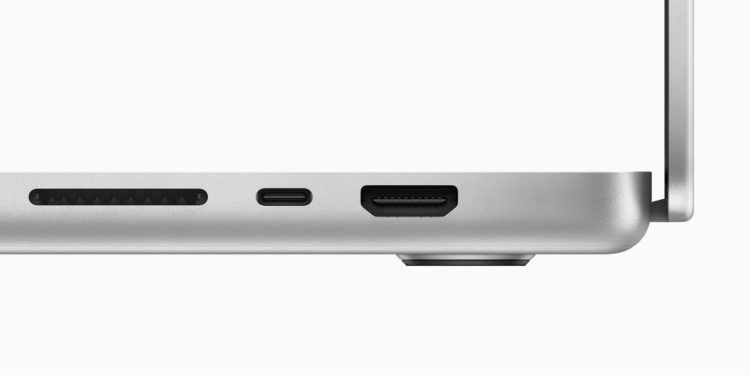The latest generation of the MacBook Pro series uses an HDMI port again. The problem is that the port uses the 2.0 protocol and not the much faster 2.1 standard, which severely limits the throughput for external screens.
With the introduction of the MacBook Pro series in 2016, Apple removed the HDMI port. Professional users criticized this change. Now Apple has brought the port back. The new MacBook Pro series supports digital video output via an HDMI port, allowing connection to external screens, TVs and other devices without having to use an additional adapter. But there is a catch. As developer Paul Haddad discovered, the new 14- and 16-inch MacBook Pros are based on HDMI 2.0 and can therefore only support a single 4K screen with a refresh rate of 60 Hz. The more flexible HDMI 2.1 standard, introduced in 2017, can transmit data at up to 48 gigabits per second, enough to support 4K screens at up to 120 Hz. Why the higher bandwidth protocol is not included in Apple's latest Mac flagships remains unclear for now.
MacBook Pro 2021: Are the new chips to blame?
Some observers believe the problem lies with the M1 Pro and M1 Max chips. In addition to the HDMI port, the 2021 MacBook Pros have three Thunderbolt 4 ports that can be used for charging, display port, and data transfer of up to 40 Gb/s with compatible Thunderbolt 4 or USB 4 peripherals. Despite the HDMI hardware shortage, Apple's M1 Pro chip can handle up to three external 6K displays at 60 Hz simultaneously, while the M1 Max also supports another 6K display and a 4K display at 60 Hz. Both MacBook Pro models also support DVI output, but users will need to purchase an HDMI-to-DVI adapter. Anyone interested in one of the models can purchase the devices from Apple starting today. pre-orderDepending on the equipment and model, costs range from 2,249 to 6,839 euros. (Image: Apple)





